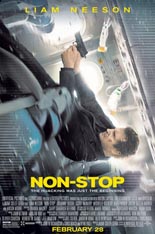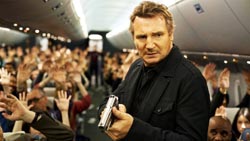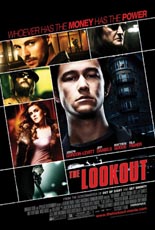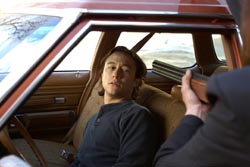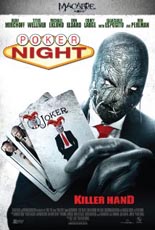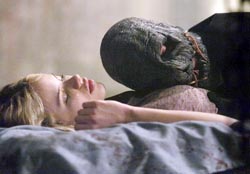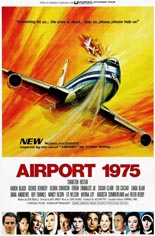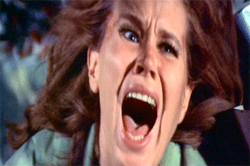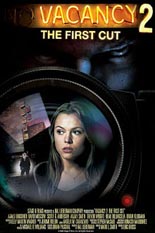
 Who among us left 2007’s Vacancy with a burning desire to learn the backstory, e.g. “I’d sure enjoy that more if only I knew how the snuff-film killer became a snuff-film killer”? Me neither, which may explain why Sony Pictures sent the prequel directly to DVD, if not made it expressly for that medium. Here’s the thing, though: Stupid subtitle and all, Vacancy 2: The First Cut is pretty good, or at least good enough. Even denied stars Kate Beckinsale and Luke Wilson, not to mention director Nimród Antal, it’s as satisfying as that original sleeper hit.
Who among us left 2007’s Vacancy with a burning desire to learn the backstory, e.g. “I’d sure enjoy that more if only I knew how the snuff-film killer became a snuff-film killer”? Me neither, which may explain why Sony Pictures sent the prequel directly to DVD, if not made it expressly for that medium. Here’s the thing, though: Stupid subtitle and all, Vacancy 2: The First Cut is pretty good, or at least good enough. Even denied stars Kate Beckinsale and Luke Wilson, not to mention director Nimród Antal, it’s as satisfying as that original sleeper hit.
Title screens inform us that Vacancy 2 depicts the demise of the inaugural batch of victims among some 200 snuff videos found at Meadow View Inn when authorities shut the place down for good. The way director Eric Bross (Vampire Bats) sets this up, you’re forgiven in advance for thinking the proceedings will play out as found footage. Luckily, they do not, charting its antagonists’ progression from mere Peeping Toms into Mansion Family members bitten by the cinema-vérité bug.
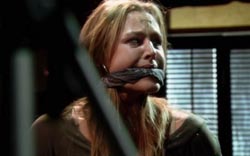 At the out-of-the-way motel, Gordon (David Moscow, Big’s mini-Tom Hanks all grown up) and partner-in-crime Reece (Brian Klugman, Cloverfield) have rigged a room to tape couples’ sexual romps, copies of which they sell on the underground market. When one “Mr. Smith” (Scott Anderson, reprising his killer role) checks in with a prostitute — only to penetrate her with a knife, as opposed to … y’know — they gain a third partner and leap from homemade porn to the only genre more despicable.
At the out-of-the-way motel, Gordon (David Moscow, Big’s mini-Tom Hanks all grown up) and partner-in-crime Reece (Brian Klugman, Cloverfield) have rigged a room to tape couples’ sexual romps, copies of which they sell on the underground market. When one “Mr. Smith” (Scott Anderson, reprising his killer role) checks in with a prostitute — only to penetrate her with a knife, as opposed to … y’know — they gain a third partner and leap from homemade porn to the only genre more despicable.
Enter two relocating Chicagoans, played by the perennially underrated Agnes Bruckner (TV’s Anna Nicole) and Trevor Wright (2001 Maniacs: Field of Screams), and third-wheel friend Arjay Smith (Be Kind Rewind). Checking into Gordon and Reece’s cheap motel under the dead of buzzing neon, they’re told, “If you need anything, don’t hesitate to scream” … and yet they stay anyway.
Suspense is kept at a mild boil for a good two-thirds of the running time. As expected — a little too expected, given the flash-forward prologue and prequel concept — the film degenerates from a perfunctory thriller into a rote contraption of who can stab and/or shoot whom first. Like father, like son. —Rod Lott

